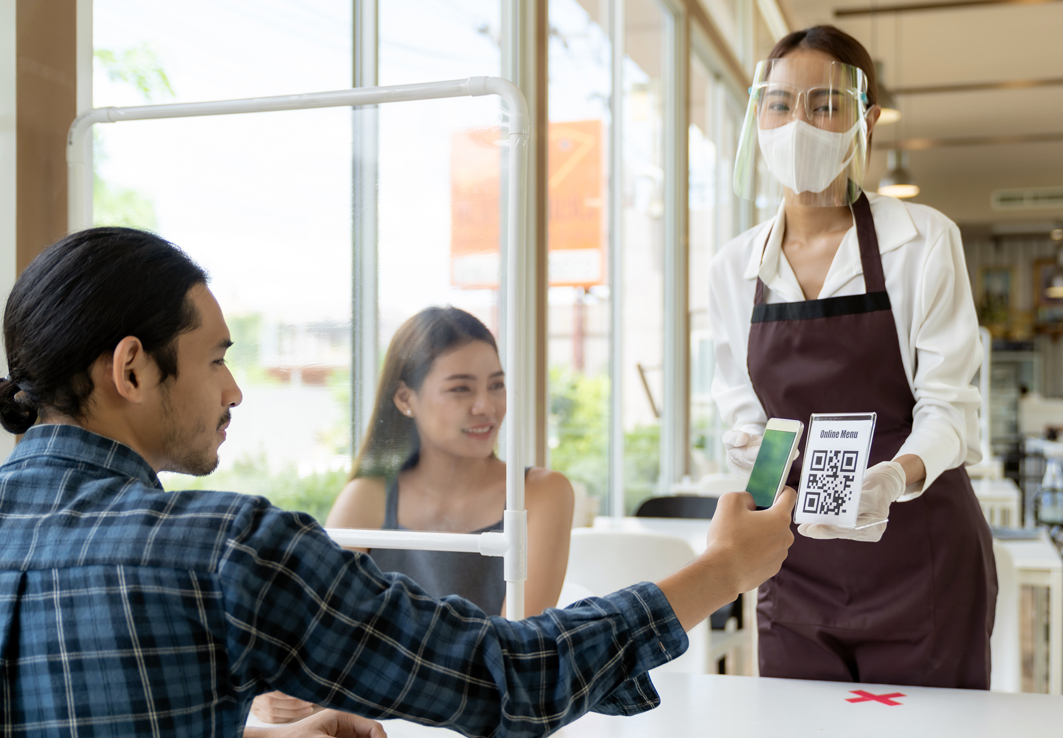AI and Dining in the New Normal

How can AI help the struggling foodservice industry? We take a look at how food establishments around the world are using tech to give their customers a safer and better dining experience.
It’s a bright, sunny afternoon. You are seated in your favorite restaurant, enjoying the chef’s signature dish and laughing with your loved ones. Seven months into this global health crisis, what was once a common occurrence for most now seems more like a long-lost memory.
The COVID-19 pandemic has upended the foodservice industry worldwide. In Canada, the restaurant industry could suffer losses between $21.7 billion and $44.8 billion in annual sales this 2020, according to the latest Foodservice Facts Report released by Restaurants Canada, a not-for-profit organization representing the country’s foodservice industry.
During the first three months of the COVID-19 pandemic, the U.S. restaurant and food industry likely lost nearly $120 billion in sales, according to a survey conducted by the National Restaurant Association.
Everyone from big restaurant chains to your beloved neighborhood bistro is scrambling to keep their establishments—and their employees—afloat. From curbside pick-up and weekly meal plans to ramping up their online delivery systems, most have adapted their business to meet the changing needs and concerns of their customers.
But most people are still—understandably—anxious about public spaces and food handling, preferring to stay and eat at home instead. How can artificial intelligence (AI) and machine learning make restaurants safer now and in the future? And when this crisis is over, how can food establishments better utilize this technology to optimize their business and create an even better experience for their customers?
Here are some examples of AI being used in the foodservice industry.
AI surveillance systems
Are the kitchen and wait staff handling the food properly? That’s probably what you’re wondering before ordering Chinese takeout. Dragontail Systems, an Australian software company, has the answer. Its patented AI camera, the QT AI camera, has been updated to ensure cleanliness and sanitation in restaurants. This surveillance system can detect if employees have washed their hands and are wearing gloves and masks. It also detects how often workspaces and equipment are sanitized.
AI-enhanced online delivery systems
With most working from home, online delivery is the name of the game. In the United States, digital restaurant orders grew by 138% in May, according to American market research company NPD Group. AI integration could help establishments optimize their routes and deliveries by analyzing prepping and cooking times and identifying the fastest routes.
Self-service kiosks with facial recognition
Social distancing is crucial to curbing the spread of COVID-19, and self-service kiosks mean less time spent interacting with servers. While facial recognition software could make this truly contactless technology, users would have to weigh the advantages of zero contact against any concerns about data privacy and cybersecurity.
Predicting foot traffic
In Japan, a restaurant more than a century old has stepped into the future, using AI to project foot traffic up to 45 days in advance. “We need to make decisions based on statistical data instead of intuition and experience as in the past,” shares restaurateur and innovator Haruki Odajima in an interview with The Japan Times.
This mindset served Odajima well last April. When his system alerted him to a significant drop in foot traffic, Odajima temporarily closed his restaurant 13 days before local authorities mandated business closures—cutting his losses and saving on operating costs.
Data to develop flavors
More than 200,000 data points and one menu—Wrap Bstrd is “Singapore’s first food and beverage brand that is driven entirely by insights derived from artificial intelligence,” Ebb & Flow Group chief executive Lim Kian Chun told the Thomson Reuters Foundation. Combining computational power with the creativity and expertise of their chefs, the restaurant’s offerings have been customized for their clients’ tastes and preferences.
Safety, convenience, efficiency, and a personalized customer experience—these are all the benefits that AI and machine learning can give food establishments around the world. The pandemic has caused tremendous upheavals in industries and businesses, but it has also accelerated digital transformation. When this global health crisis is over, we may all come out of this vastly improved and better equipped for the next big challenge. Then we can all enjoy our favorite dish in the restaurant we have come to love.
As one of the Top 20 EMS companies in the world, IMI has over 40 years of experience in providing electronics manufacturing and technology solutions.
At IMI, we believe that humanity drives technology, and we direct our passion at solutions that enhance our way of living. With more than 400,000 square meters of factory space in 22 factories across 10 countries, we are positioned to build your business on a global scale.
Our proven technical expertise, worldwide reach, and vast experience in high-growth and emerging markets make us the ideal global manufacturing solutions partner.
Let's work together to build our future today.
Other Blog


